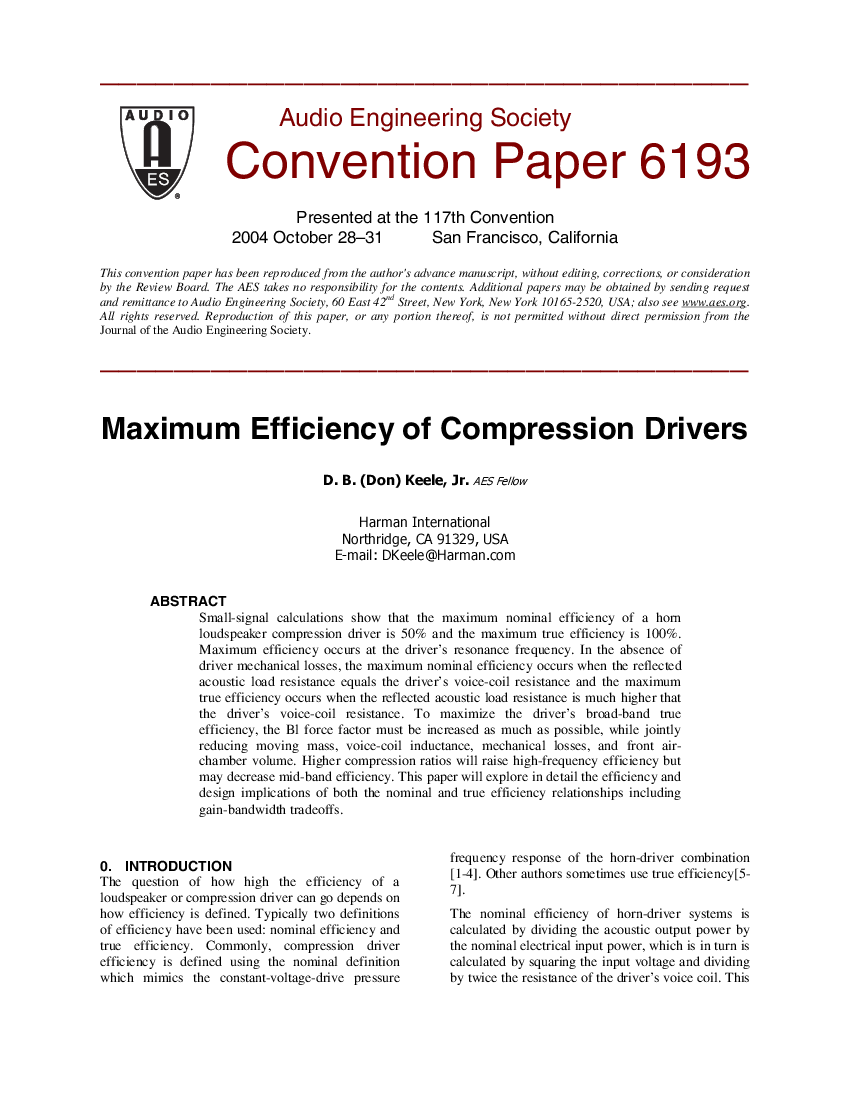Home / Publications / E-library page
You are currently logged in as an
Institutional Subscriber.
If you would like to logout,
please click on the button below.
Home / Publications / E-library page
Only AES members and Institutional Journal Subscribers can download
Small-signal calculations show that the maximum nominal efficiency of a horn loudspeaker compression driver is 50% and the maximum true efficiency is 100%. Maximum efficiency occurs at the driver`s resonance frequency. In the absence of driver mechanical losses, the maximum nominal efficiency occurs when the reflected acoustic load resistance equals the driver `s voice-coil resistance and the maximum true efficiency occurs when the reflected acoustic load resistance is much higher that the driver’s voice-coil resistance. To maximize the driver `s broad-band true efficiency, the Bl force factor must be increased as much as possible, while jointly reducing moving mass, voice-coil inductance, mechanical losses, and front airchamber volume. Higher compression ratios will raise high-frequency efficiency but may decrease mid-band efficiency. This paper will explore in detail the efficiency and design implications of both the nominal and true efficiency relationships including gain-bandwidth tradeoffs.
Author (s): Keele, Jr., D.B. (Don)
Affiliation:
Harman International, Northridge, CA
(See document for exact affiliation information.)
AES Convention: 117
Paper Number:6193
Publication Date:
2004-10-06
Import into BibTeX
Session subject:
Loudspeakers
Permalink: https://aes2.org/publications/elibrary-page/?id=12850
(1155KB)
Click to purchase paper as a non-member or login as an AES member. If your company or school subscribes to the E-Library then switch to the institutional version. If you are not an AES member Join the AES. If you need to check your member status, login to the Member Portal.

Keele, Jr., D.B. (Don); 2004; Maximum Efficiency of Compression Drivers [PDF]; Harman International, Northridge, CA; Paper 6193; Available from: https://aes2.org/publications/elibrary-page/?id=12850
Keele, Jr., D.B. (Don); Maximum Efficiency of Compression Drivers [PDF]; Harman International, Northridge, CA; Paper 6193; 2004 Available: https://aes2.org/publications/elibrary-page/?id=12850